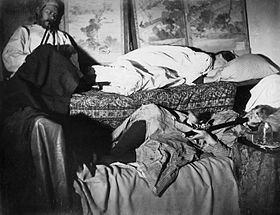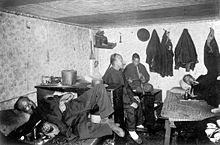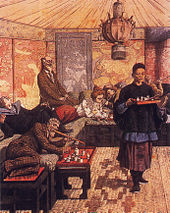
Detective fiction is a subgenre of crime fiction and mystery fiction in which an investigator or a detective—whether professional, amateur or retired—investigates a crime, often murder. The detective genre began around the same time as speculative fiction and other genre fiction in the mid-nineteenth century and has remained extremely popular, particularly in novels. Some of the most famous heroes of detective fiction include C. Auguste Dupin, Sherlock Holmes, and Hercule Poirot. Juvenile stories featuring The Hardy Boys, Nancy Drew, and The Boxcar Children have also remained in print for several decades.

Opium is dried latex obtained from the seed capsules of the opium poppy Papaver somniferum. Approximately 12 percent of opium is made up of the analgesic alkaloid morphine, which is processed chemically to produce heroin and other synthetic opioids for medicinal use and for the illegal drug trade. The latex also contains the closely related opiates codeine and thebaine, and non-analgesic alkaloids such as papaverine and noscapine. The traditional, labor-intensive method of obtaining the latex is to scratch ("score") the immature seed pods (fruits) by hand; the latex leaks out and dries to a sticky yellowish residue that is later scraped off and dehydrated. The word meconium historically referred to related, weaker preparations made from other parts of the opium poppy or different species of poppies.
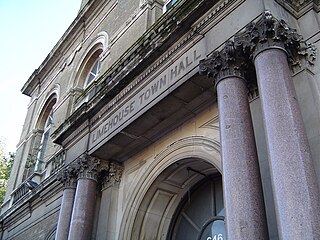
Limehouse is a district in the London Borough of Tower Hamlets in East London. It is 3.9 miles (6.3 km) east of Charing Cross, on the northern bank of the River Thames. Its proximity to the river has given it a strong maritime character, which it retains through its riverside public houses and steps, such as The Grapes and Limehouse Stairs. It is part of the traditional county of Middlesex. It became part of the ceremonial County of London following the passing of the Local Government Act 1888, and then part of Greater London in 1965.

The Mystery of Edwin Drood is the final novel by the English author Charles Dickens, originally published in 1870.

Constantia is a South African dessert wine. It is made from Muscat Blanc à Petits Grains grapes grown in the district of Constantia, City of Cape Town. In the eighteenth and nineteenth centuries it was widely exported to Europe. However, production of Constantia ceased in the late nineteenth century following the devastation of South African vineyards by the phylloxera epidemic. Production resumed at Klein Constantia in 1986, at Groot Constantia in 2003 and at Buitenverwachting in 2007.
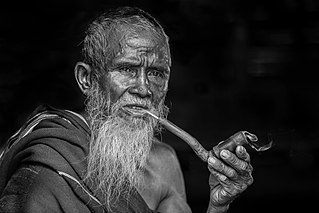
Pipe smoking is the practice of tasting the smoke produced by burning a substance, most commonly tobacco or cannabis, in a pipe. It is the oldest traditional form of smoking.
Thomas Burke was a British author. He was born in Clapham Junction, London.

The Grapes is a public house situated directly on the north bank of the Thames in London's Limehouse area, with a veranda overlooking the water. To its landward side, the pub is found at number 76 in Narrow Street, flanked by former warehouses now converted to residential and other uses. It is listed Grade II on the National Heritage List for England.
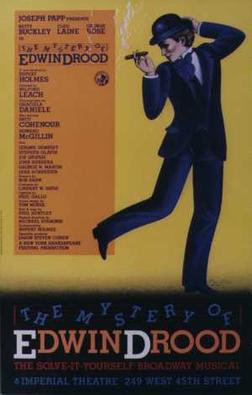
The Mystery of Edwin Drood is a musical written by Rupert Holmes based on the unfinished Charles Dickens novel of the same name. The show was the first Broadway musical with multiple endings. The musical won five Tony Awards, including Best Musical; from among eleven nominations. Holmes received Tony awards for Best Book of a Musical and Best Original Score.
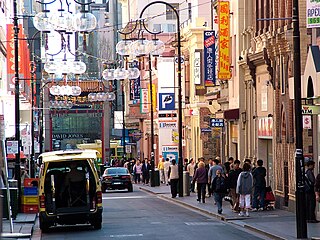
Chinatown is an ethnic enclave in the central business district (CBD) of Melbourne, Victoria, Australia. Centred at the eastern end of Little Bourke Street, it extends between the corners of Swanston and Spring streets, and consists of numerous laneways, alleys and arcades. Established in the 1850s during the Victorian gold rush, it is notable for being the longest continuous ethnic Chinese settlement in the Western World and the oldest Chinatown in the Southern Hemisphere.

Smoking is a practice in which a substance is combusted and the resulting smoke is typically inhaled to be tasted and absorbed into the bloodstream of a person. Most commonly, the substance used is the dried leaves of the tobacco plant, which have been rolled with a small rectangle of paper into an elongated cylinder called a cigarette. Other forms of smoking include the use of a smoking pipe or a bong.
East End literature comprises novels, short stories, plays, poetry, films, and non-fictional writings set in the East End of London. Crime, poverty, vice, sexual transgression, drugs, class-conflict and multi-cultural encounters and fantasies involving Jews, Chinamen and Indian immigrants are major themes.

The East End of London in popular culture covers aspects of popular culture within the area of the East End of London. The area is roughly that covered by majority of the modern London Borough of Tower Hamlets, and parts of the south of the London Borough of Hackney.

The history of smoking dates back to as early as 5000 BC in the Americas in shamanistic rituals. With the arrival of the Europeans in the 16th century, the consumption, cultivation, and trading of tobacco quickly spread. The modernization of farming equipment and manufacturing increased the availability of cigarettes following the reconstruction era in the United States. Mass production quickly expanded the scope of consumption, which grew until the scientific controversies of the 1960s, and condemnation in the 1980s.

The Last Dickens is a novel by Matthew Pearl published by Random House. It is a work of historical and literary fiction. The novel is a Washington Post Critics' Pick. It contains some characters from The Dante Club.
The Tong Wars were a series of violent disputes beginning in the late 19th century among rival Chinese Tong factions centered in the Chinatowns of various American cities, in particular San Francisco. Tong wars could be triggered by a variety of inter-gang grievances, from the public besmirching of another Tong's honor, to failure to make full payment for a "slave girl", to the murder of a rival Tong member. Each Tong had salaried soldiers, known as boo how doy, who fought in Chinatown alleys and streets over the control of opium, prostitution, gambling, and territory.

A Chinatown developed in Phoenix in the 1870s as the predominantly single male Chinese population self-segregated primarily to provide cultural support to each other in a place where they faced significant discrimination. They came to dominate certain types of jobs and made an impression on the greater community with their celebrations of Chinese holidays. Other aspects of their culture, primarily gambling and the smoking of opium were viewed less favorably, and in the 1890s, they were forced to establish a new Chinatown several blocks away from the prior prime downtown location, where their community would be "less visible".
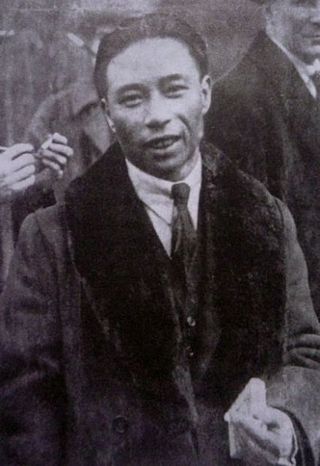
Brilliant (Billy) Chang was a Chinese restaurateur and drug dealer who was implicated in supplying the drugs that killed Freda Kempton in 1922. The British popular press portrayed him as an international drug mastermind and the "Dope King" of London.

Hop, the Devil's Brew is a 1916 American silent film directed by Lois Weber and Phillips Smalley. Inspired by an exposé of opium trafficking in the Saturday Evening Post, the semidocumentary film starred Smalley as a Customs official and Weber as his opium-addicted wife.

John L. Wimbush was an English landscape and portrait painter.
